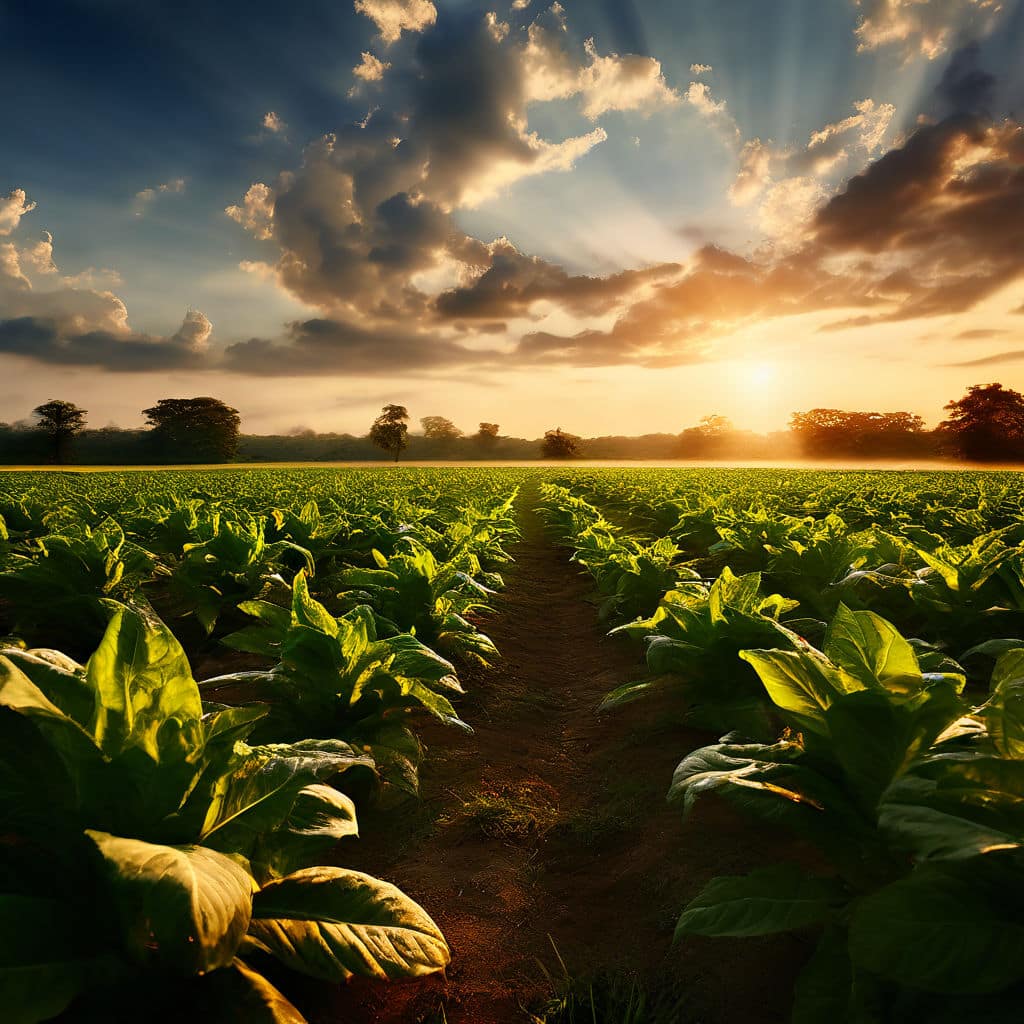Let’s take a step-by-step look at the entire process:
1. **Tobacco Cultivation:**
– The process begins with the cultivation of tobacco plants. Tobacco requires specific climatic conditions, typically found in regions like Cuba, the Dominican Republic, Nicaragua, Honduras, and other parts of the Caribbean and Central America.
– The seeds are sown in seedbeds and nurtured until they reach the transplanting stage.
– Once the seedlings are ready, they are transplanted to the fields where they will grow to maturity. Throughout the growth cycle, the plants require careful attention, including watering, fertilization, and pest control.
2. **Harvesting:**
– When the tobacco leaves reach maturity, they are handpicked by skilled workers. The leaves are harvested layer by layer as they ripen, ensuring that only the finest leaves are selected for cigar production.
– Different leaves on the tobacco plant ripen at different times, so the harvesting process is often staggered over several weeks.
3. **Curing:**
– After harvesting, the tobacco leaves undergo a curing process to remove excess moisture and develop flavor. This typically involves hanging the leaves in specially designed curing barns or sheds.
– The leaves are carefully monitored during curing to ensure that they dry evenly and develop the desired aroma and flavor characteristics.
4. **Fermentation:**
– Following curing, the tobacco leaves undergo fermentation, a crucial step in the cigar-making process. During fermentation, the leaves are stacked in piles called pilones.
– The pilones are carefully monitored and periodically rotated to ensure even fermentation. This process can take several months to a few years, depending on the desired characteristics of the tobacco.
5. **Blending:**
– Blending is the art of combining different types of tobacco leaves to create the desired flavor profile for a particular cigar.
– Master blenders carefully select leaves from different varieties and regions, taking into account factors such as flavor, aroma, strength, and combustion properties.
– Blending is both a science and an art, requiring years of experience and a keen palate to achieve the perfect balance of flavors.
6. **Rolling:**
– Once the tobacco leaves are blended, they are ready for rolling. Highly skilled workers, known as torcedores, hand-roll each cigar.
– The torcedores meticulously layer the filler, binder, and wrapper leaves, ensuring a uniform shape and density.
– Rolling cigars by hand is a time-honored tradition that requires precision and dexterity. Each torcedor may roll hundreds of cigars per day, yet each one is crafted with care and attention to detail.
7. **Aging:**
– After rolling, the cigars undergo an aging process to allow the flavors to meld and mature. This typically involves storing the cigars in specially designed aging rooms or warehouses.
– During aging, the cigars absorb and release moisture, which helps to enhance their flavor and aroma.
– The length of the aging process can vary depending on the type of tobacco and the desired characteristics of the finished cigar. Some cigars are aged for just a few months, while others may be aged for several years.
8. **Packaging:**
– Once the cigars have aged to perfection, they are ready for packaging. They may be packaged in boxes, bundles, or individual sleeves, depending on the manufacturer’s preference.
– Packaging is not just about aesthetics; it also plays a crucial role in preserving the quality of the cigars during storage and transportation.
9. **Distribution and Enjoyment:**
– Finally, the cigars are distributed to retailers and aficionados around the world, where they are enjoyed by enthusiasts who appreciate the craftsmanship and artistry that went into creating each one.
– Whether enjoyed alone or with friends, cigars provide a moment of relaxation and contemplation, allowing smokers to savor the flavors and aromas that took years to perfect.
The cigar-making process is a labor of love that requires skill, patience, and a deep understanding of the tobacco plant. From seed to smoke, each step in the process contributes to the unique character of every cigar, making it a true work of art.

